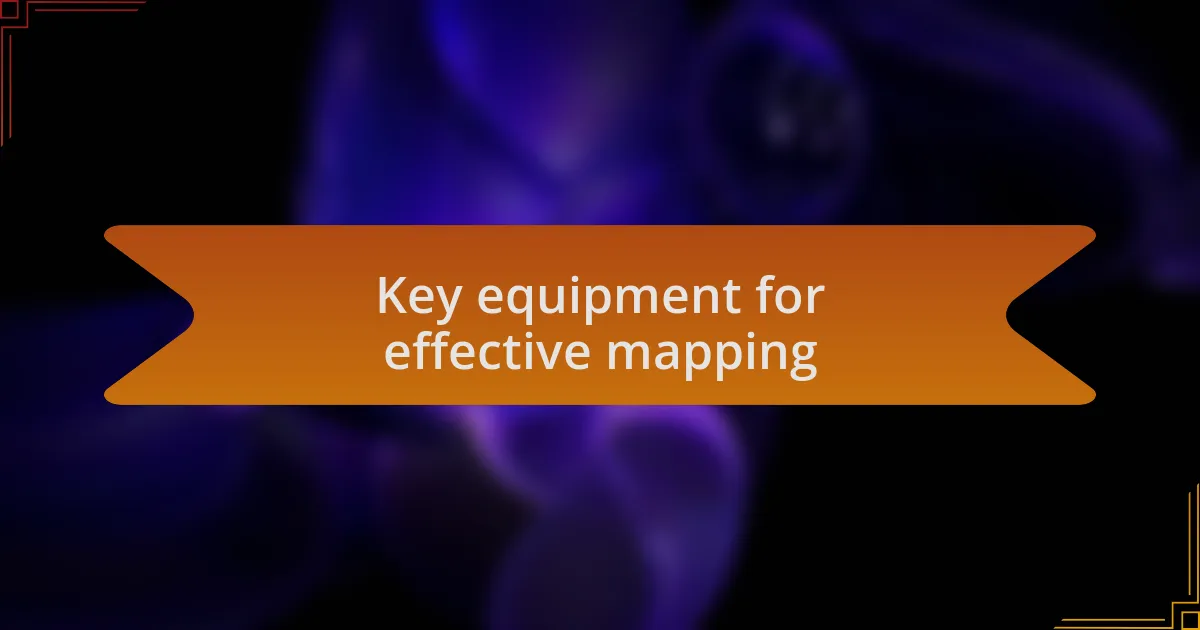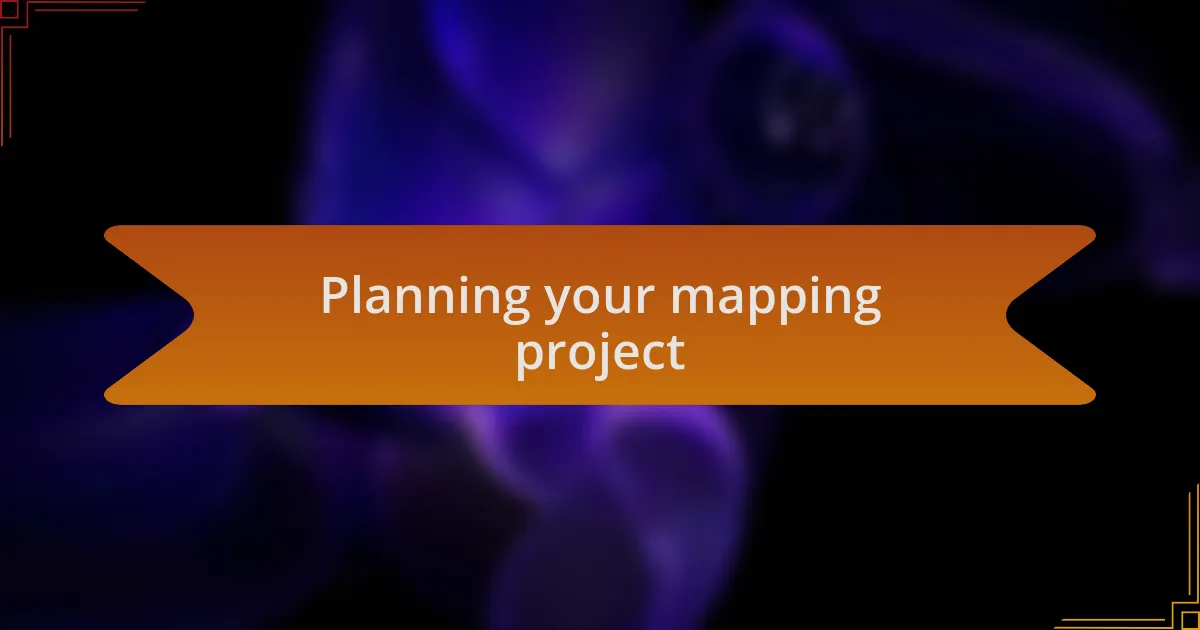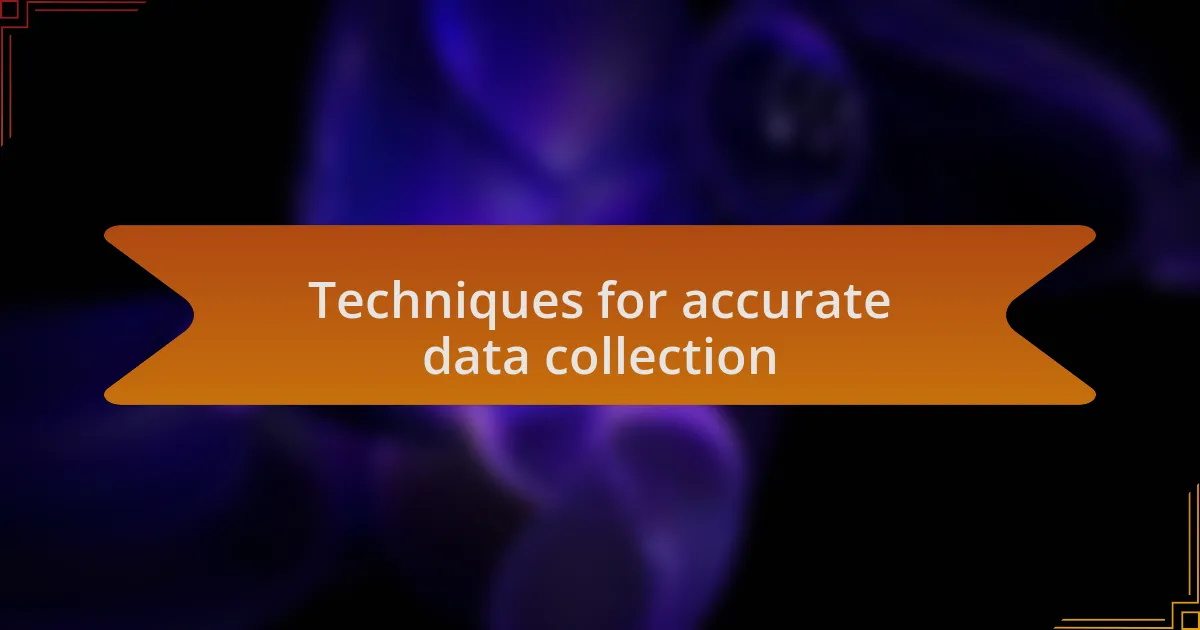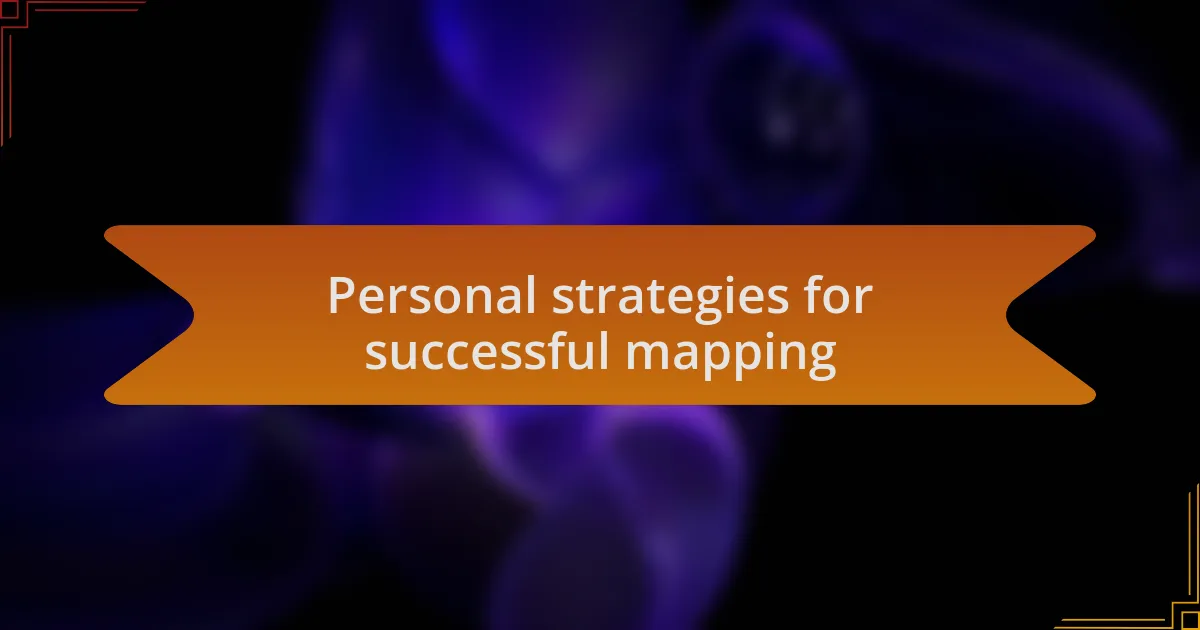Key takeaways:
- Drones with high-resolution cameras and GPS enable the creation of detailed 2D and 3D maps that surpass traditional surveying methods.
- Utilizing Real-Time Kinematic (RTK) GPS significantly improves mapping accuracy, achieving centimeter-level precision in data collection.
- Planning is essential in mapping projects, requiring clear objectives, weather considerations, and engagement with local stakeholders for valuable insights.
- Leveraging local knowledge and iterative feedback enhances mapping accuracy and adds depth, transforming technical data into compelling narratives.

Understanding drone mapping technology
Drones equipped with high-resolution cameras and advanced sensors have revolutionized the way we gather and analyze geographic data. I recall my first experience watching a drone methodically capture imagery of an expansive landscape; it felt surreal to see the earth unfold through such a high-tech lens. Have you ever wondered how these machines can create detailed maps with such precision?
The technology behind drone mapping often involves a combination of aerial photography and GPS data to produce 2D and 3D maps. When I first learned about photogrammetry, the process of measuring and interpreting photographs to create map data, it struck me how science and art converge in this field. This intersection makes each mapping project not just a technical endeavor, but a creative exploration, doesn’t it?
In practice, analyzing the collected data reveals invaluable insights that would be nearly impossible to achieve through traditional surveying methods. I remember a project in Zanzibar where we uncovered hidden patterns in agricultural fields that transformed how local farmers approached crop management. It’s incredible to think how drone mapping technology empowers communities and drives innovation in real-time.

Key equipment for effective mapping
When it comes to effective mapping, the drone itself is just the beginning. I’ve come to understand that the type of camera integrated into the drone plays a pivotal role in image quality. For instance, during a recent survey in Zanzibar, we utilized a drone with a 20-megapixel camera, and the difference in detail was remarkable compared to lower-resolution options. Have you ever seen a map so clear it felt like you could reach out and touch the landscape?
Equally crucial is the use of GPS technology, which enhances mapping accuracy significantly. In one of my field projects, I experimented with RTK (Real-Time Kinematic) GPS to improve our positioning data. The results were astounding, as it provided centimeter-level accuracy that made our maps incredibly reliable. This precision isn’t merely technical; it can dramatically change how stakeholders make decisions based on the data we provide.
Another key piece of equipment I can’t overlook is the software that processes the data collected by the drones. I remember grappling with different mapping software options, feeling overwhelmed by the choices. Ultimately, finding the right platform—one that streamlined workflow and offered intuitive features—was a game changer. It’s fascinating how software can transform raw data into valuable insights; have you ever thought about the story behind the numbers?

Planning your mapping project
When planning your mapping project, setting clear objectives is essential. I always start by asking myself what I want to achieve with the mapping effort. For instance, during one project, my goal was to create an accurate topographic map of a coastal area in Zanzibar, which required detailed data collection and analysis. Understanding the project’s purpose helps shape every other decision, from equipment selection to data processing.
Timing is another critical factor in planning. I’ve noticed that the weather can significantly affect drone operations. There was a time when I was caught off guard by sudden rain during a mapping session. It taught me the importance of checking local forecasts and having a flexible schedule. I now always allot extra time for potential setbacks because planning around the unpredictable can save not only time but also resources.
Finally, engaging with local stakeholders is something I consider invaluable. Before starting any project, I take the time to discuss my plans with community members and local authorities. Their insights can be enlightening and may even lead to discovering areas of interest I had not initially considered. Have you ever tapped into local knowledge? It often brings a layer of depth and context that enhances the overall quality of your mapping project.

Techniques for accurate data collection
When it comes to accurate data collection, one technique that I’ve found invaluable is utilizing real-time kinematic (RTK) GPS technology. I remember a mapping project in a densely vegetated area where traditional GPS accuracy fell short. By integrating RTK, I was able to achieve centimeter-level precision, which made a significant difference in the accuracy of my final maps. It’s fascinating how small technological advancements can dramatically elevate the quality of our work.
I often emphasize the importance of clear flight planning before launching the drone. Recently, I conducted a survey over a rocky terrain, and meticulous planning was key in determining the ideal flight path. By meticulously mapping out the specific coordinates and altitude for each pass, I ensured that my data collection was thorough and seamless. Isn’t it interesting how a little extra effort in planning can save hours of rework?
Another technique I’ve found helpful is conducting multiple flights over the same area to create overlapping images. In one instance, while mapping a beautiful coastal bay, these overlaps turned out to be crucial. They not only enhanced the details captured but also provided avenues for cross-referencing data. Have you ever thought about how redundancy can actually boost your accuracy? By layering multiple datasets, I was able to spot inconsistencies that I might have missed otherwise. It’s these moments that reaffirm the value of thorough data collection techniques in achieving precise outcomes.

Personal strategies for successful mapping
When it comes to my personal strategies for successful mapping, one key approach I’ve adopted is leveraging local knowledge. The first time I launched a mapping project in Zanzibar, I reached out to local fishermen to understand the coastal landscape. Their insights not only enriched my mapping perspective but also helped me identify areas that standard satellite images often miss. Have you ever considered how local expertise can unveil insights we might overlook?
Additionally, I’ve learned the importance of iterative feedback during the mapping process. On one occasion, I shared preliminary map drafts with local stakeholders after my initial flight. The feedback was eye-opening; they pointed out significant features I had completely missed. This is a perfect example of how collaboration can enhance our work. What about you? How open are you to revising your work based on fresh perspectives?
Lastly, I believe in the power of storytelling through maps. In my experience, presenting data visually isn’t just about accuracy—it’s about how that data resonates with the audience. I remember creating a detailed map of a cultural site that included annotations on its historical significance. The positive response was incredibly gratifying. Why do you think engaging narratives might be just as essential as technical details in mapping? Balancing these elements has become a cornerstone of my mapping strategy, and it’s a lesson that continues to shape my work.